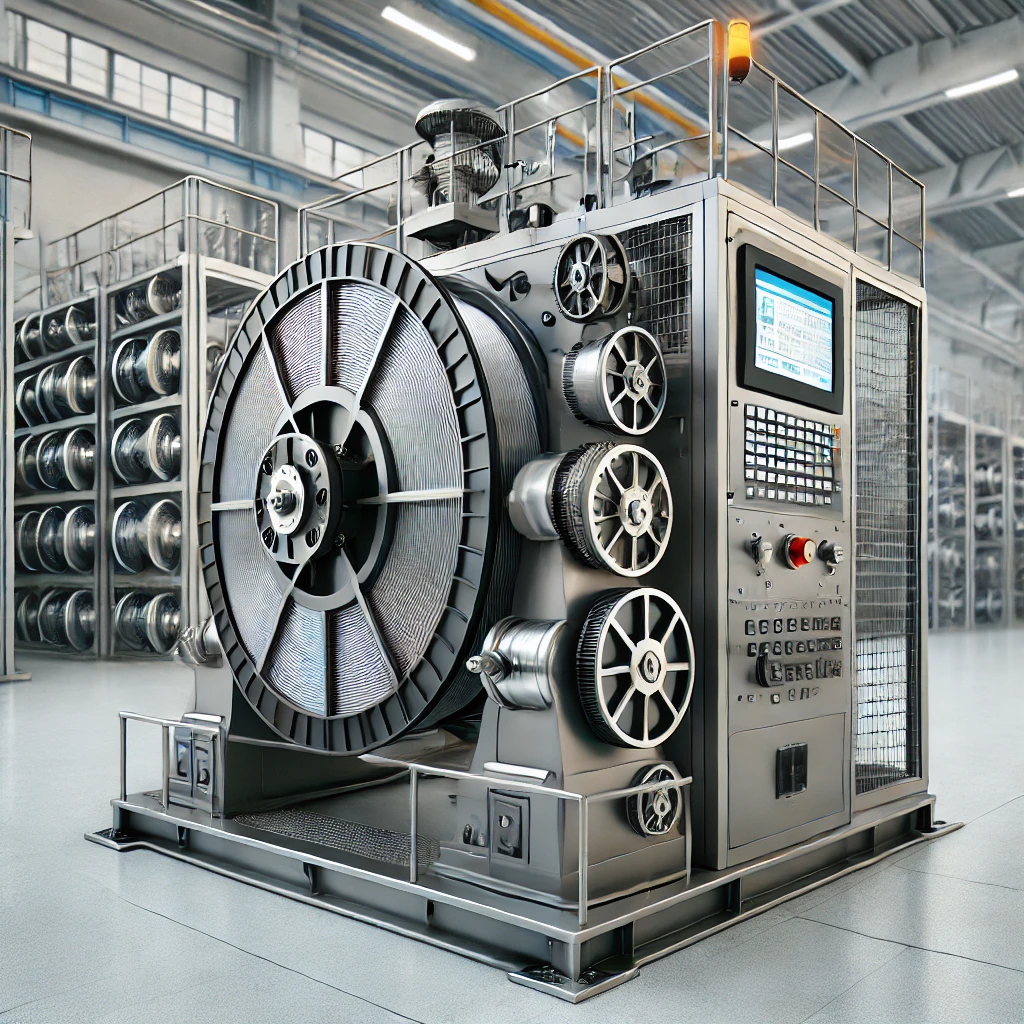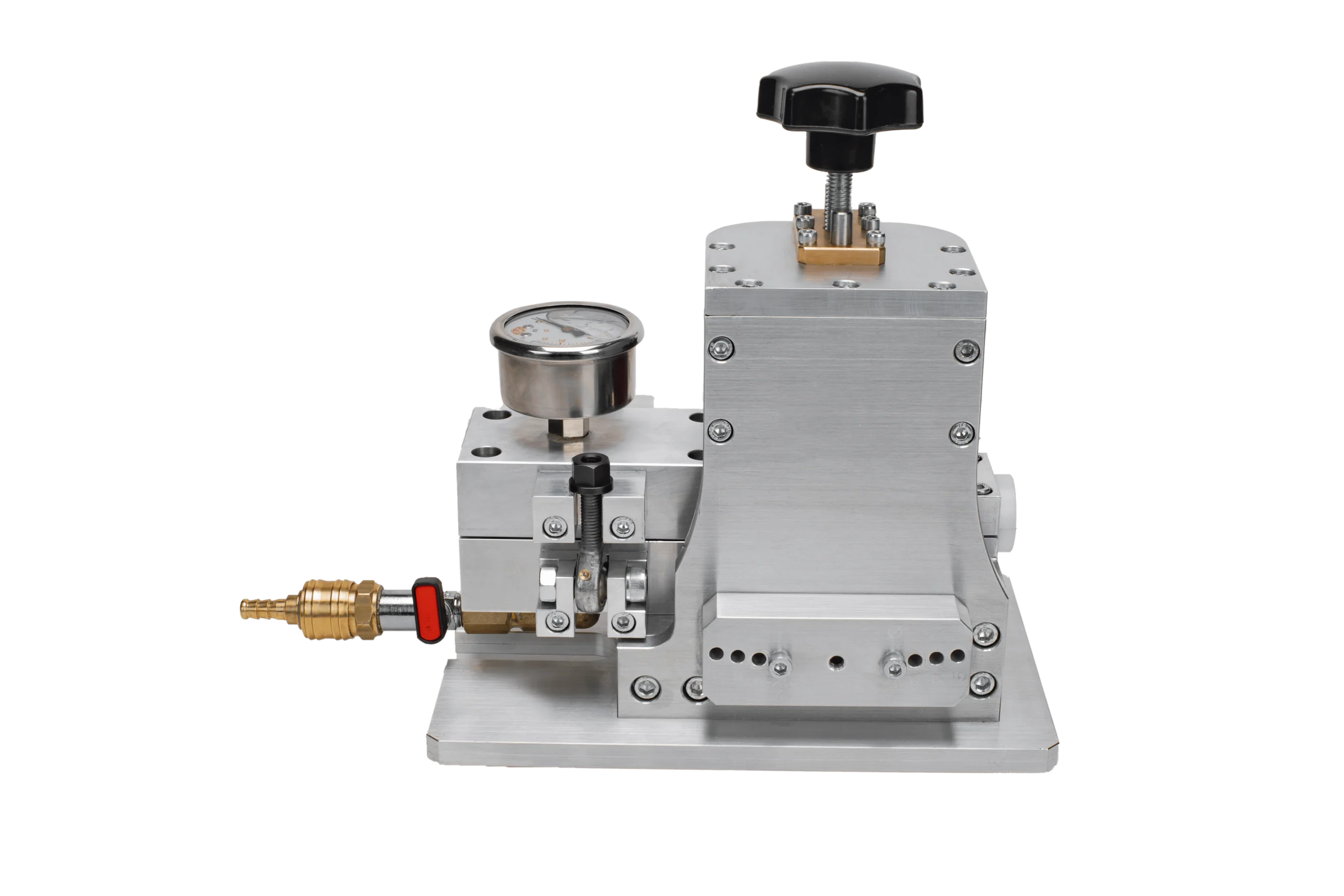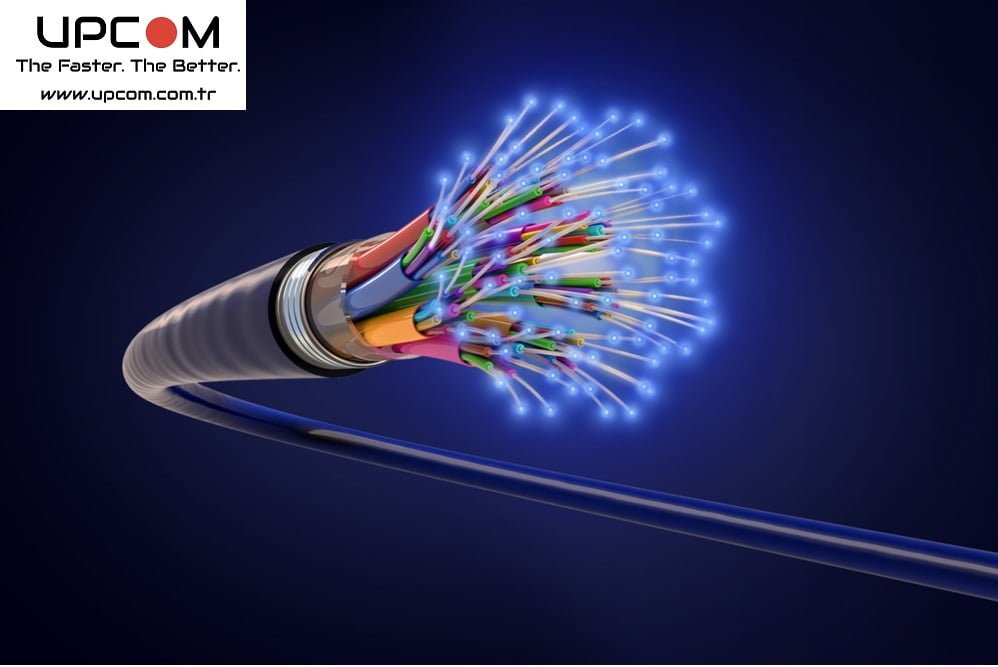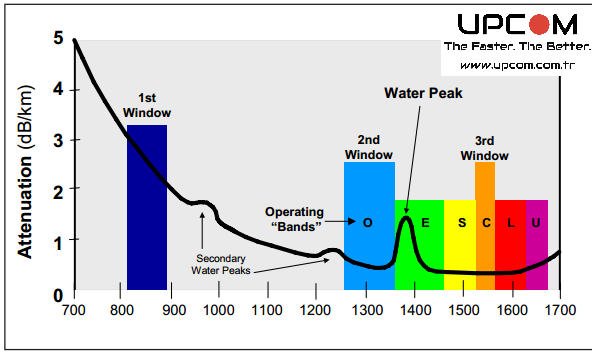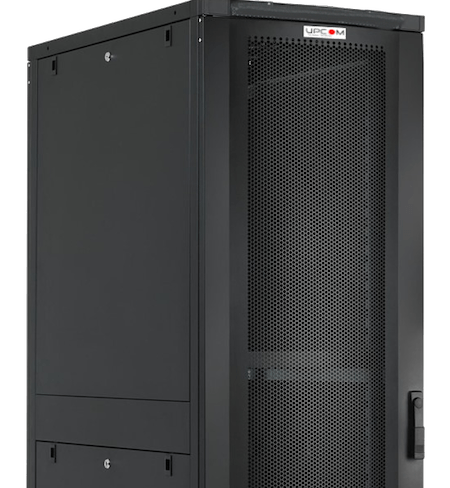15 Dec Fiber Optic Blowing Tips

Fiber Optic Blowing Tips – 7 important points
7 Fiber Optic Blowing Tips – Fiber optic Cable blowing is a specialized process involving the use of pressurized air to install cables into telecom ducts. This method is highly effective for blowing the fiber optic cables far away but requires careful preparation and execution to ensure success. Below, we explore the most important considerations to maximize cable blowing efficiency, minimize risks, and achieve optimal results.
1. Prioritize Safety First
Safety is non-negotiable in cable blowing operations. Ensure all technicians are properly trained and equipped with the necessary personal protective equipment (PPE), including:
- Eye protection
- Ear muffs
- Helmets
- Protective suits
Communication between all workstations is essential. Test and confirm all safety signals (e.g., “STOP” or “RUN”) before starting the machinery. Additionally, always depressurize the system before handling connections to avoid injury.

2. Use Compatible Cable and Duct Sizes
The compatibility of cable and duct sizes is critical for smooth installation. Aim for a fill ratio of 30-50%, which balances efficiency and performance. To calculate this ratio:

Incompatible sizes can cause blockages, reduce airflow efficiency, and lead to cable damage.
3. Protect and Prepare Your Cable
Before blowing, ensure your cable is well-protected against environmental factors:
- Use a cable cap to prevent high-pressure air from penetrating the cable.
- Store the cable drum on a suitable pay-off stand to prevent tangles and damage.
- Shield the cable from water, dust, and direct sunlight during the installation process.
4. Verify and Adjust Your Cable Blowing Machine
Proper setup of your cable blowing machine is essential. Verify the following:
- Compatibility: Ensure the machine, accessories, and compressor match the cable and duct specifications.
- Airflow and Pressure: Confirm the machine can deliver the required airflow and pressure for the job.
- Connections: Use suitable seals, nut rings, and duct connectors.
Additional Tips:
- A drier and air cooler between the compressor and machine improve efficiency by maintaining clean, dry air.
- Always ensure the pay-off stand is compatible with the cable drum size.
5. Choose the Right Compressor
Selecting the appropriate air compressor for the duct size is crucial. Here’s a quick reference guide:
| Duct Size (mm) | Airflow (m³/min) | Max Pressure (bar) | Recommended Compressor |
|---|---|---|---|
| 8 | 0.8 | 15 | Kaeser M13 |
| 8-12 | 1.0 | 15 | Kaeser M17 |
| 12-15 | 1.5-2.5 | 7 or 14 | Kaeser M17 |
| 15-20 | 3.5-5.0 | 7 or 10 | Kaeser M125 |
| 32-50 | 7-11 | 7 or 10 | Kaeser M120 |
Ensure the compressor meets the required specifications to avoid under- or over-pressurizing the system.
6. Prepare the Duct
A clean, obstruction-free duct is vital for successful cable blowing. Follow these steps:
- Gauge Test: Use a measuring device to check for damage or deformation in the duct.
- Cleaning: Run sponges through the duct to remove dirt and moisture. Repeat if necessary until the duct is clean and dry.
Pro Tip: Avoid sharp bends and connectors in the duct path as they can limit the blowing distance.
7. Optimize the Blowing Procedure
Start the blowing operation with careful adjustments to speed and pressure:
- Begin pushing the cable at 40-60 m/min without applying air pressure.
- Gradually increase the air pressure to 1-2 bars to restore speed when it slows down.
- If progress halts, release the air pressure, wait a few minutes, and restart. Repeat as needed.
When Distance Is a Challenge:
- Stop the machine and release pressure.
- Let the system stabilize for 5 minutes, then reapply air at maximum pressure.
- Resume blowing to cover the remaining distance.
Additional Tips
- Use Lubricants: Special lubricants designed for cable jetting reduce friction and enhance performance.
Cable Blowing Lubricant UP S LUB 20
Cable Blowing Lubricant UP S LUB 100XL
- Monitor Conditions: Check weather conditions like wind, rain, and temperature, as they can affect air pressure and the cable’s trajectory.
- Remote Monitoring: For long-distance installations, use monitoring systems to identify and resolve issues in real-time.
By following these detailed guidelines, you can ensure a smooth, efficient, and successful fiber optic cable blowing process, even for the most challenging long-distance installations.
These are some cable blowing tips important to remember. Below you can find some setup videos of our machines;
Cable Blowing Tips
How to Blow Fiber Optic Cable: A Comprehensive Fiber Jetting Guide
Table of Contents Introduction to fiber optic cable blowing Required Equipment and Tools Understanding Fiber Blowing Machines and Their Components Preparing for the Fiber Blowing Process Safety Precautions Before Starting Step-by-Step Fiber Optic Cable Blowing Procedure 6.1 Setting Up the Fiber Blowing Machine 6.2 Preparing...
Cable Spooling Machines: The Ultimate Guide to Efficient Cable Handling
In industries such as telecommunications, energy, manufacturing, and infrastructure, the need for Cable Spooling Machines have never been greater. Traditional manual spooling methods can lead to inconsistencies, labor-intensive processes, and increased cable damage. This is where cable spooling machines revolutionize operations by ensuring precise, automated, and...
Fiber Optic Network Optimization: How to Improve Performance in High-Density Urban Areas
As urban populations grow and the demand for high-speed internet continues to increase, telecom operators face the challenge of optimizing fiber optic network performance in high-density urban environments. Fiber optic network optimization is crucial to ensure seamless connectivity, reduce latency, and manage bandwidth efficiently in...
Emerging Trends in Fiber Optic Technology: A Comprehensive Guide for European Telecom Operators
Emerging Trends in Fiber Optic Technology; In an era where data transmission speed, reliability, and efficiency are more critical than ever, fiber optic technology continues to be the backbone of telecommunications. As the demand for 5G, IoT, and high-speed broadband accelerates, telecom operators must stay...
Fiber Optic Cable Installation: Why Blowing Machines Outperform Traditional Methods
In the world of telecommunications infrastructure, efficiency, cost reduction, and long-term sustainability are key factors that drive innovation. The process of fiber optic cable installation has evolved significantly over the years, with cable blowing machines revolutionizing the industry. Best Fiber Optic Cable Installation Equipment is...
Advancements in Fiber Optic Technology: Improving Bandwidth and Transmission Rates
Fiber optic technology has revolutionized the way we communicate, providing faster and more reliable data transmission over long distances. The use of fiber optic cables has become increasingly popular in recent years, and the technology continues to evolve at a rapid pace. In this article,...
Fiber Optic Cable Installation: The Future of High-Speed Data Transmission
In today’s digital-first world, the demand for high-speed, secure, and reliable data transmission is growing exponentially. Whether it’s for telecommunications, data centers, military applications, or medical technology, efficient data transmission is critical for modern infrastructure. Fiber Optic Cable Installation. This is where fiber optic cables...
Tight-Buffered and Loose-Tube Cables
The difference between tight-buffered and loose-tube fiber optic cables is in the way the fibers are protected and packaged within the cable. Tight-buffered fiber optic cables feature fibers that are surrounded by a tight-fitting buffer material, such as a plastic coating, to protect them from...
OS1 and OS2 Fiber Optic Cores
OS1 OS2 Fiber Cores are types of single mode fiber optic cables that are used for high-speed data transmission. OS1, or “single-mode,” cable has a small core (typically 9 microns in diameter) that allows for a single light beam to be transmitted over long distances...
Fiber to the home (FTTH)
Fiber to the home (FTTH) is a technology that uses optical fibers to deliver high-speed internet and other communication services directly to individual homes or buildings. The fibers are run from a central location, such as a telephone exchange or data center, to a termination...
Best Fiber Optic Cabling Installation Practices Guide
Fiber optic cabling installation is a complex process that requires specialized knowledge and equipment. Here are some best practices for fiber optic cabling installation to ensure a successful and reliable installation: Plan the Installation: Before starting the installation, it is important to plan...
How Fiber Optic Cables and Internet Affect Our Lives
Fiber optic cables use light to transmit data, rather than electricity. The cable is made up of a central core of extremely pure glass or plastic, surrounded by layers of protective material. Data is encoded as pulses of light that travel along the core of...
Cable Blowing Lubricant
Cable blowing lubricants are specially formulated lubricants used to lubricate cables as they are being pulled through conduits or other tight spaces during the installation process. The lubricant is applied to the cables before they are pulled, and it helps to reduce friction and make...
All about fiber optics
What does a fiber optic cable do? A fiber optic cable is a type of cable that uses glass or plastic threads to transmit data. These threads, or fibers, are extremely thin and are surrounded by a protective coating. They are able to transmit data...
Fiber Optic Blowing Tips
Fiber Optic Blowing Tips – 7 important points 7 Fiber Optic Blowing Tips – Fiber optic Cable blowing is a specialized process involving the use of pressurized air to install cables into telecom ducts. This method is highly effective for blowing the fiber optic cables...
Fiber Optic Loss
Fiber Optic loss, As a supplier of fiber optic products, perhaps the most frequently asked question about fiber optic cabling testing is: “What is the maximum acceptable attenuation? ”Unfortunately, the answer is:“ it depends ”. But what does it depend on? This is because it depends on...
Choosing the right 19 rack cabinet
Choosing the right 19 rack cabinet.. Would you like to buy a server cabinet or network cabinet? Or just the accessories for an existing 19″ cabinet? For experienced network technicians, choosing the right cabinet or accessories is straightforward. However, for those who rarely purchase a server...
CPR compliant Cables, All Your Questions are now answered!
What does CPR mean in cable? In the context of cables, CPR stands for Construction Products Regulation. It is a European Union regulation that applies to all construction products that are placed on the EU market. The CPR sets out minimum requirements for the performance...
11 reasons why the future belongs to fiber optic
11 Reasons Why the Future Belongs to Fiber Optic “The future belongs to fiber optics!” This bold claim is backed by compelling reasons. Fiber optic technology is not just an upgrade—it’s a transformative infrastructure shaping how we connect, communicate, and consume information. Here are 11...
Cable Blowing by Pressurized Air / Fiber Optic Cable Blowing Procedure
Cable Blowing (Sometime called air assisted cable blowing, Cable Blowing by Pressurized Air, air blowing, jetting and all these words are describing method of cable blowing with pressurized air) Cable Installation has been always a challenge for installers. There are several method to lay the...
Optical Fiber
What is optical fiber? We are used to the concept of moving knowledge in numerous ways. A wire cable transports the sounds from our speech into a socket on the wall and is borne by another cable in the nearby telephone interchange, as we...
FTTH installation Technologies
FTTH installation technologies Table of Contents Innovative approach to FTTH installation Technologies…1 Infrastructure Sharing…2 Duct sharing in France…2.1 Sewer pipes…2.2 Clean water pipes…2.3 Gas pipes for Houses…2.4 Creative FTTH installation Technologies Installation Methods…3 Handheld fiber cable blowing machine …3.1 Pushable fiber …3.2 Fiber optic cable de-coring...
What is MPO Cable
MPO Cables: A Comprehensive Guide to High-Density Fiber Optic Connectivity What is MPO Cable? Executive summary Push On (MPO) Multi-fiber Connectors – Fiber connectors consisting of several optical fibers are multi-fiber push on connectors, or MPOs for short. While described as something of an array...
IP55 Outdoor Cabinet
We found out that there is no enough information about 19” IP55 Outdoor Cabinet and thus we will investigate it. If you are reading this article, then you are probably planning to make a procurement soon. So, let’s dive in! We will try to give...
What is fiber optic cable
Fiber optic cables are an innovative communication medium that transmit data using light instead of electrical signals. Designed for efficiency and speed, these cables leverage thin strands of glass or plastic fibers bundled within a protective casing. The question; What is fiber optic cable? can...
19″ Rack Cabinet
What is a 19” Free Standing Rack Cabinet? 19” free standing rack cabinets provide a robust, cost-effective enclosure solution. PDU mounting or connectivity on both the front and rear of the cabinet. The Free Standing 19” Rack cabinets are ideal for high-density data center environments,...
How Much Does Fiber Optic Cabling Installation Cost?
On average, fiber optic cable installation cost $1 to $6 per 30cm depending on the fiber count. It’s very difficult to estimate an exact price for an entire building to be wired, however an example would be $15,000 to $30,000 for a building with 100 to 200 drops....
Construction Products Regulation (CPR) for Cables
CPR for cables (Construction Products Regulation) for cables became a legal requirement in July 2017. CPR for fiber optic cables is having an intended use for permanent installation in buildings and construction works, to be accompanied by a Declaration of Performance (DoP). This requirement relates only to...
5 Fan Facts About the Fiber Optic Cables
Fiber optic cables are a type of cable that use glass or plastic fibers to transmit data. Here are some interesting facts about fiber optic cables: Speed: Fiber optic cables are capable of transmitting data at much faster speeds than traditional copper cables. This makes...
Cable Blowing Machine work
Cable Blowing Machines here Click here to find out Cable Blowing Machine Product Portfolio Click Here Cable blowing machines, also known as a jetting machine or fiber optic cable blowing machine, is a device used to blow cables, such as fiber optic cables, into ducts...



